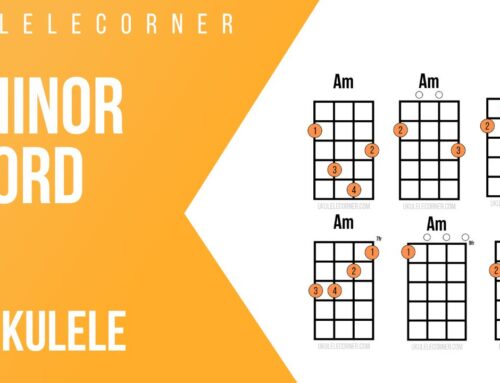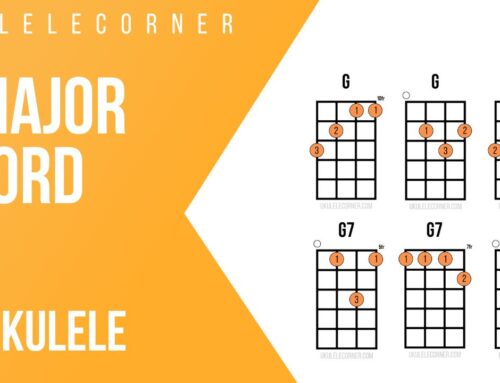In this article we’ll explore 6th intervals on ukulele and how to use familiar shapes to easily find certain chords. Let’s dig in.
6th Intervals on Ukulele
Harmony in music is often built on the intervals of 3rds and 6ths. These intervals sound very smooth and can be used in different situations from harmonizing melodies to improvisation. The two notes that make up the interval of a 6th can be thought of as parts of chords. Letʻs explore 6th interval shapes in the key of C. We’ll learn to relate the shapes to the major and dominant 7th chords they imply.
Any interval is the distance between two notes. If you play the note C on the 3rd string open, play up the scale counting C as 1, D as 2, E as 3, F as 4, G as 5, A as 6, and B as 7. There are 7 notes in the major scale. The distance of a 6th is between C and A, D and B, E and C, F and D, ect. To make the 6th shapes on the ukulele, play scales moving up the neck on 2 strings at once. A C major scale starting on the 3rd string open will be CDEFGABC to the 12th fret. On the 1st string it will be ABCDEFGA. Play these notes together and you will have the interval of a 6th moving through the scale. Notice how we are not adding any sharps or flats to the notes to keep the harmony in the key of C. You can add these later to find other keys or play passing tones or accidentals in the key of C.
Finding 6th Shapes
6ths work well on the 3rd and 1st strings, on the 2nd and 1st strings with a bit of left hand stretching, and on the 4th and 2nd strings when using the low G tuning. (The same shapes would create the intervals or 3rds with the high G tuning.) For the shapes on the 3rd and 1st string, I often prefer to use my left hand 2nd finger to play all the notes on the 3rd string and either the 1st or 3rd fingers to play the 1st string depending on the shape. If the note on the 1st string is a fret below the note on the 3rd string I use my 1st finger. If it is on the same fret I use the 3rd finger. Follow the worksheet and see how this works. The right hand fingerings can vary but I often use my thumb for the lowest note and middle finger on the 1st string. I also often use the index finger on the 3rd and ring on the 1st strings. Try both and see how each feels.
Using 6ths to Find Chords
Once you can play the shapes moving up and down the neck on these strings, start to memorize the chords they represent. For example, the open 3rd and 1st strings are part of a F chord (also Am). The 2nd fret is part of a G chord. The 4th fret of the 3rd and 3rd fret of the 1st string is part of a C chord. Try using these shapes to play song progressions you know using these chords. Work your way all the way up to the 12 fret and memorize the chord names. Before you know it you will have multiple options for C, F, G, and G7 chords. Apply these to song progressions to let them sink in.
You can follow on with shapes on the 2nd and 1st strings in the 2nd line of the worksheet using the left hand 1st finger on the 2nd string and 4th finger on the 1st string. Memorize the chord names and apply the shapes to songs like we did earlier. If you are using the low G tuning you can explore the shapes in the 3rd line as well which feature the 4th and 2nd strings. The left hand 2nd finger can play all the notes on the 4th string, the 1st finger can play notes on the 2nd string 1 fret below, and the 3rd finger can play notes on the same fret of the 2nd string.
Download the worksheet below to follow along.
***
I use these shapes all the time. They are easy to play and create smooth connections of melodic phrases while bringing out specific chords and implied harmonies. Dive in and see if you can start connecting all the shapes while moving from low to high positions.
We hope you’ve enjoyed this introduction to 6th intervals on ukulele! We have many more lessons just like this, from fingerboard knowledge, to harmony, to chord families, to sight reading, to the CAGED system, to scales, and much more at Ukulele Corner Academy. Join Ukulele Corner Academy today!




Leave A Comment